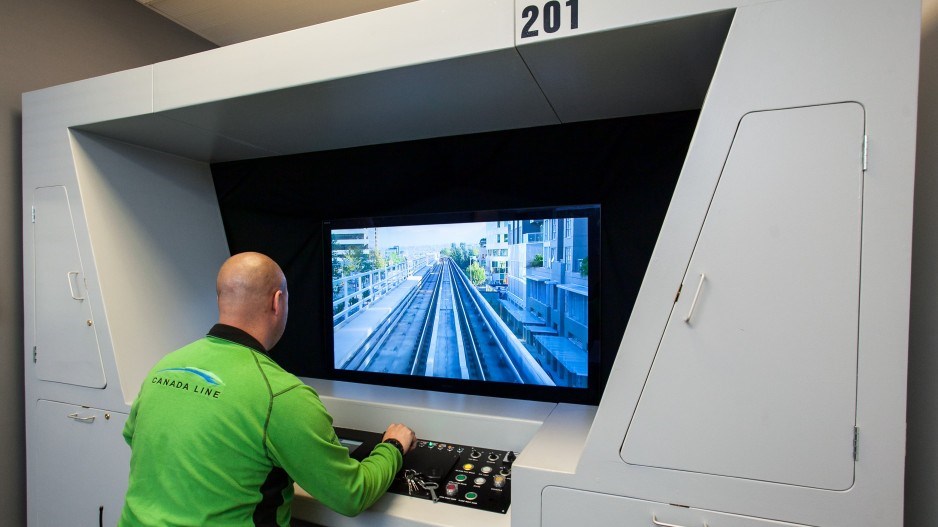The Canada Line -- a 19-kilometre long rapid transit system connecting Richmond, Vancouver and YVR airport -- is 14 years old this year.
Making sure it stays in good, safe running order involves some predictive maintenance, which the line’s operator – SNC-Lavalin – is now accomplishing through the use of digital twinning.
The company estimates the use of this virtual Canada Line has helped reduce maintenance costs by 15 per cent.
The Canada Line’s digital twin system has been in development and beta testing for about 18 months and has been fully operational now for about six months.
“We tend to use it more in the maintenance space,” said Ryan Versteeg-Biln, director of asset management at SNC-Lavalin. “As the operator, we don’t have as many levers to pull operationally. A lot of our service is dictated by TransLink. Where we can really dial in and improve our performance is maintenance.”
The Canada Line’s digital twin uses sensors, cameras, drones, scanners, machine learning, 3-D modeling and a range of data inputs (weather, ridership, maintenance records, etc.) to produce a virtual system that operators can use to anticipate problems and maintenance issues – the implications of mechanical failure resulting from freezing temperatures and ice in the winter, for example.
“It’s fed with all live data that you can get," Versteeg-Biln. "Every piece of information you can get feeds into this digital twin, and then you use it to perform analytics or run simulations to let you make data-driven decisions on how you should maintain, operate or otherwise interact with that system.”
These virtual systems are not novel – they are in use in a number of newer airports and rapid transit systems around the world. But they tend to be built in conjunction with new infrastructure, not integrated into older infrastructure, Versteeg-Biln said.
“We wanted to undertake kind of a proof-of-concept of brownfield digital twinning -- that is, putting in a digital twin on an existing infrastructure system that was already built and in operation,” Versteeg-Biln said.
The Canada Line was built by SNC-Lavalin at a cost of $2.1 billion, and the company continues to operate the system for TransLink under a contract that expires in 2044.
For a system like the Canada Line, digital twinning is most useful in predictive maintenance.
“For us, we particularly looked at infrastructure life-cycle modelling – so basically looking at where we could best spend our money to preserve our asset long-term…how we can tackle aging infrastructure concern,” Versteeg-Biln said.
“Also, we really wanted an opportunity to capitalize on what technology can offer us in predictive maintenance…really predicting failures that could potentially occur on the line and adjust our maintenance program so we could address these failures before they occur.
"Where a digital twin can help is in failure response. You can run simulations and say if this incident occurs…what is the optimal way to manage operations to recover from this?
“We have…reduced our maintenance intervention by 15 per cent and reduced our in-service failure rate by 30 per cent,” Versteeg-Biln said. “What it means is we go in less frequently. Instead of going in on schedule, we’re going on when the data tells us. For some assets that means we maintain them a little bit more frequently. And for other assets we let them go a little bit longer."
The Canada Line is not the only transportation system in the Lower Mainland that uses a digital twin -- so does the Vancouver International Airport (YVR).
YVR's digital twin allows airport operators to visualize what is happening on the airfield and in the airport terminal.
"For example, we are now using the twin as a situational awareness tool to monitor passenger queues at security check points and deploy resources when the lineups hit a certain threshold," said YVR spokesperson Adriana Unger.
"To support YVR’s decarbonization goals and help the aviation industry reach net zero emissions by 2030, YVR is working in collaboration with carrier partners to build a greenhouse gas calculation model that monitors, maps out and analyzes more efficient aircraft movements with the aim to reduce airside emissions."





